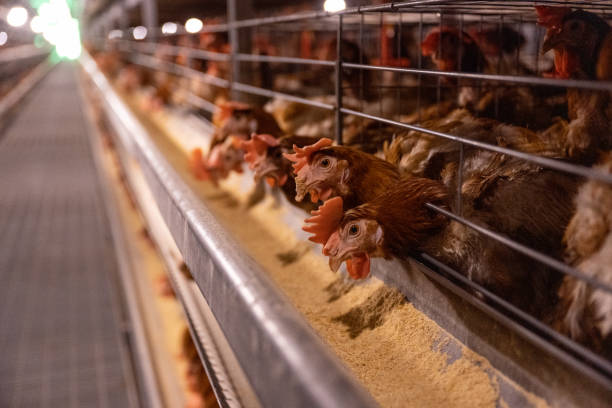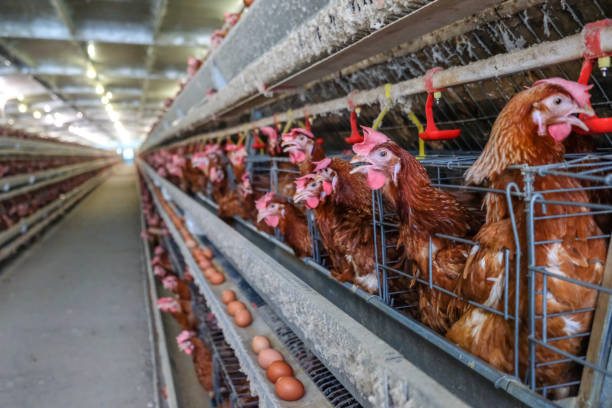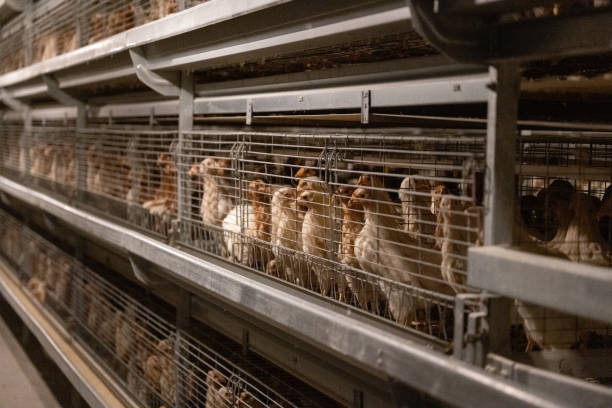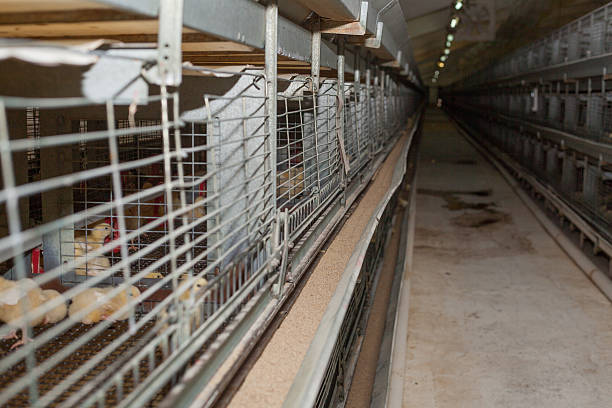
Crafting a Winning Layer Farming Business Plan: India Focus
Crafting a Winning Layer Farming Business Plan: India Focus
Starting a layer farming business in India can be an incredibly rewarding venture, but like any business, success hinges on meticulous planning. A well-structured business plan acts as your roadmap, guiding you through the initial setup, day-to-day operations, and long-term growth. This comprehensive guide outlines the essential components of a winning layer farming business plan, specifically tailored for the Indian context.
Executive Summary: Your First Impression
The executive summary is arguably the most crucial part of your business plan. It’s a concise overview that encapsulates the entire plan, highlighting key aspects like your mission, vision, business goals, target market, and financial projections. Think of it as an elevator pitch – it needs to grab the reader’s attention and convince them of your business’s viability.
Mission Statement: A clear statement of your farm’s purpose. For example, “To provide high-quality, affordable eggs to the local community while adhering to sustainable and ethical farming practices.”
Business Goals: Define your specific, measurable, achievable, relevant, and time-bound (SMART) goals. Examples include achieving a specific egg production target, expanding the farm size within a certain timeframe, or capturing a defined market share.
Financial Projections: Highlight key financial figures, such as projected revenue, expenses, and profitability. This provides a quick overview of the financial potential of your venture.
Target Market: Briefly describe your ideal customer base. Are you focusing on local consumers, restaurants, or retailers?
Company Description: Laying the Foundation
This section delves into the details of your layer farming business. It provides information about the legal structure, ownership, location, and overall concept.
Legal Structure: Determine the legal structure of your business, such as sole proprietorship, partnership, or private limited company. Each structure has different legal and tax implications. Consider consulting with a legal professional to determine the best option for your situation.
Ownership: Clearly state the ownership structure, including the names and roles of all partners or shareholders.
Location: Justify your choice of location. Consider factors like proximity to markets, availability of resources (water, feed), biosecurity risks, and local regulations. A well-chosen location can significantly impact your profitability.
Business Concept: Elaborate on your farming practices. Will you focus on free-range, organic, or conventional layer farming? Explain your rationale and the unique selling points of your business.

Market Analysis: Understanding Your Audience
A thorough market analysis is critical for understanding the demand for eggs in your target area. It helps you assess the competition, identify potential customers, and determine pricing strategies.
Target Market: Define your target market in detail. Consider demographics (age, income level), consumption patterns, and preferences for egg types (brown, white, organic).
Market Size and Growth: Research the market size for eggs in your region and project future growth. This information will help you estimate the potential demand for your products.
Competition: Analyze your competitors, including their strengths, weaknesses, pricing strategies, and market share. Identify opportunities to differentiate your business and gain a competitive advantage.
Pricing Strategy: Develop a pricing strategy that is competitive yet profitable. Consider factors like production costs, market prices, and the perceived value of your eggs. It also depends to what extant you want to go with your product in the market.
Distribution Channels: Determine how you will distribute your eggs to customers. Options include direct sales to consumers, partnerships with restaurants and retailers, or selling through wholesalers.
Products and Services: What You’re Offering

This section details the products and services you will offer, focusing on the quality, characteristics, and added value of your eggs.

Egg Production: Specify the type of eggs you will produce (e.g., brown eggs, white eggs, organic eggs). Highlight the quality and nutritional value of your eggs.
Value-Added Products: Consider offering value-added products, such as processed egg products (e.g., boiled eggs, pickled eggs) or manure as fertilizer. Explore all your options. You may not go with all, but brainstorming will give you idea.
Branding and Packaging: Develop a strong brand identity that resonates with your target market. Invest in attractive and functional packaging that protects your eggs and enhances their appeal.
Marketing and Sales Strategy: Reaching Your Customers
A well-defined marketing and sales strategy is essential for attracting and retaining customers. This section outlines your tactics for promoting your eggs and generating sales.
Marketing Channels: Identify the marketing channels you will use to reach your target market. Options include:
Local advertising: Newspapers, radio, and local television.
Online marketing: Social media, website, and online advertising.
Direct marketing: Flyers, brochures, and direct mail.
Partnerships: Collaborating with local restaurants, retailers, and farmers’ markets.
Sales Promotions: Develop sales promotions to attract new customers and encourage repeat purchases. Examples include discounts, loyalty programs, and bundled products.
Customer Service: Provide excellent customer service to build loyalty and positive word-of-mouth referrals.
Operational Plan: Managing Your Farm
This section describes the day-to-day operations of your layer farm, including facility management, flock management, and biosecurity measures.
Facility Management: Outline the layout and design of your poultry sheds, including ventilation, lighting, and feeding systems. For hotter climates, efficient and sustainable design must be taken into consideration or will sky rocket operational cost.
Flock Management: Detail your plan for purchasing, raising, and managing your layer flock. Include information on breed selection, feeding schedules, vaccination programs, and egg collection procedures.
Biosecurity Measures: Implement strict biosecurity measures to prevent disease outbreaks and maintain the health of your flock. This includes controlling access to the farm, disinfecting equipment, and implementing a vaccination program.
Waste Management: Develop a plan for managing poultry waste in an environmentally responsible manner. Options include composting, using manure as fertilizer, or selling it to other farmers.
Management Team: Who’s in Charge
This section introduces the management team and highlights their experience and expertise.
Organizational Structure: Describe the organizational structure of your business, including the roles and responsibilities of each team member.
Management Team Biographies: Provide brief biographies of key management personnel, highlighting their relevant experience and qualifications.
Advisory Board: Consider forming an advisory board of experienced professionals to provide guidance and support.
Financial Plan: Crunching the Numbers
The financial plan is a critical component of your business plan, providing a detailed financial analysis of your venture.
Start-up Costs: Estimate the total start-up costs for your layer farm, including land, buildings, equipment, and initial operating expenses. Have some reserves in case there are any unforeseen expenses.
Funding Sources: Identify the sources of funding for your business, such as personal savings, loans, or grants.
Projected Income Statement: Develop a projected income statement outlining your anticipated revenues, expenses, and profits over a 3-5 year period.
Projected Cash Flow Statement: Create a projected cash flow statement to track the movement of cash in and out of your business.
Balance Sheet: Prepare a balance sheet outlining your assets, liabilities, and equity at a specific point in time.
Break-Even Analysis: Determine the break-even point for your business, which is the level of sales needed to cover your expenses.
Key Financial Ratios: Calculate key financial ratios, such as profitability ratios, liquidity ratios, and solvency ratios, to assess the financial health of your business.
Appendix: Supporting Documents
The appendix includes supporting documents that provide additional information and validation for your business plan.
Market Research Data: Include relevant market research data, such as market size and growth statistics, competitor analysis, and customer surveys.
Permits and Licenses: List all the necessary permits and licenses required to operate your layer farming business.
Insurance Policies: Provide copies of your insurance policies, covering property damage, liability, and other risks.
Agreements: Include copies of any relevant agreements, such as lease agreements, supply contracts, and partnership agreements.
Resumes: Attach resumes of key management personnel.
Specific Considerations for the Indian Context:
Government Subsidies and Schemes: Research and explore various government subsidies and schemes available for poultry farming in India. The National Livestock Mission (NLM) and other state-specific programs can provide financial assistance and support.
Climate Considerations: Design your poultry sheds to withstand the climate conditions in your region. Proper ventilation and insulation are crucial for maintaining optimal temperatures for egg production.
Feed Costs and Availability: The cost of feed is a significant expense in layer farming. Explore sourcing feed locally to reduce transportation costs and ensure availability. Consider formulating your own feed to optimize nutrition and reduce costs.
Disease Management: Be vigilant about disease prevention and implement strict biosecurity measures to protect your flock from common poultry diseases. Consult with a veterinarian regularly for advice and support.
Labor Costs and Availability: Assess the availability and cost of labor in your area. Consider automating certain tasks, such as egg collection and feeding, to reduce labor costs.
Power and Water Availability: Ensure a reliable supply of electricity and water for your layer farm. Consider investing in renewable energy sources, such as solar power, to reduce your reliance on the grid and lower your energy costs. Water harvesting plans can also be an advantage for the long run.
Tips for Success:
Conduct thorough research: Before starting your layer farming business, conduct thorough research on all aspects of the industry, including market trends, production techniques, and financial management.
Develop a detailed business plan: A well-structured business plan will serve as your roadmap and guide you through the challenges of starting and growing your business.
Seek expert advice: Consult with experienced poultry farmers, veterinarians, and business advisors to get valuable insights and guidance.
Start small and scale up gradually: Begin with a smaller flock and gradually increase your production as you gain experience and build your customer base.
Focus on quality and customer service: Provide high-quality eggs and excellent customer service to build a loyal customer base.
Stay updated on industry trends: Keep abreast of the latest developments in the poultry industry, including new technologies, feeding practices, and disease management techniques.
Manage your finances carefully: Track your income and expenses closely and manage your finances effectively to ensure the long-term profitability of your business.
By carefully considering these elements and tailoring your business plan to the specific conditions in India, you can increase your chances of success in the layer farming industry. Remember to be adaptable, resourceful, and persistent, and you’ll be well on your way to building a thriving layer farming business.
